Biltong is a cousin of jerky, but incorporates vinegar into the process, and omits nitrates and nitrites, common preservatives found in jerky, at least today’s version. Another difference is that biltong is typically not smoked, something I thought I would miss. I don’t, though I would like to try a bit of smoked biltong eventually. Originating in Africa, the process includes cutting, salting, and hanging in the shade of a tree to dry. All seems like a crude method, but the end result of the undoctored recipe reminds me of “salt & vinegar” jerky, a wonderful flavor combination in my opinion.
I first heard of it from Jack Spirko, who walks you through the entire process here and here, part of it being to hang the meat up in your house like it is laundry drying. I’ve done it that way, with strings of meat hanging from the ceiling via paperclips and paracord. The wife was SO happy about that one, I never did it again, knowing how much I had pushed my luck.
But I REALLY liked biltong….
A couple of weeks ago, I stumbled into a website that outlined a process for making biltong in an Excalibur dehydrator, something I already own, use, and love. With an impending road trip the following week, I knew I had to try it. (THANKS, MARK!)
Making biltong is a GREAT option for survival situations, since it requires nothing more than meat, salt, pepper, and coriander seeds and no outside energy source other than the sun. It results in a long-term storage meat product, perfect for a Paleo prepper. And it definitely is one of the things I eat (“store what you eat, eat what you store”) . Jack calls it the “perfect survival food” because of this.
Go watch Jack’s methos above, then read what I’ve done as a “quickie” way to both result in a batch of biltong AND keep the wife away from the divorce lawyers. (Seriously, why would a woman get upset over strips of wet, salted meat simply hanging in the kitchen to dry???)
My new method
Ingredients:
Lean meat (I used eye of round, it was $3.99/lb)
Rock salt
Vinegar (I used apple cider vinegar)
Coriander seeds
Black pepper
The Process
Trim most of the fat off the meat. Cut the meat into long strips, WITH the grain, another difference from jerky, making the strips THICK – up to an inch thick.
Liberally apply salt, coating all sides.
Allow the meat to sit on some sort of rack to allow the juices (being extracted by the salt) to drain. Leave it this way for 1.5 – 2 hours. I made my rack out of bamboo skewers and aluminum foil.
After the allotted time, scrape as much of the salt off each strip as you are able to.
Immerse each strip into the vinegar, leaving it there for 2 minutes, and up to 4 minutes if you cut thicker (1 inch) strips.
Remove, blot dry or allow to drain.
Crush the coriander seeds. You can also roast them beforehand to give a more smokey flavor.
Liberally sprinkle with black pepper and coriander on all sides.
Place on racks and pop the racks into the dehydrator, set at 155.
Dry for 8 hours and test the thickest piece. If it is still moist inside, dry for another 2 hours and retest. Continue doing this until it is all dry. Good luck NOT eating it all in testing – its THAT good!
I ran out while mine was drying, and left it for 12 hours – far too long. My end result, while still safe to eat, was ROCK hard, and very tough to chew. Still tasted mighty fine though, just ended up being an “all-day sucker” kind of dried meat
If you like jerky, you should really try to make this, no matter what method you use. You can alternate the spices, but do yourself a favor and try it with the original recipe first, its worth the effort.
Peace,
db
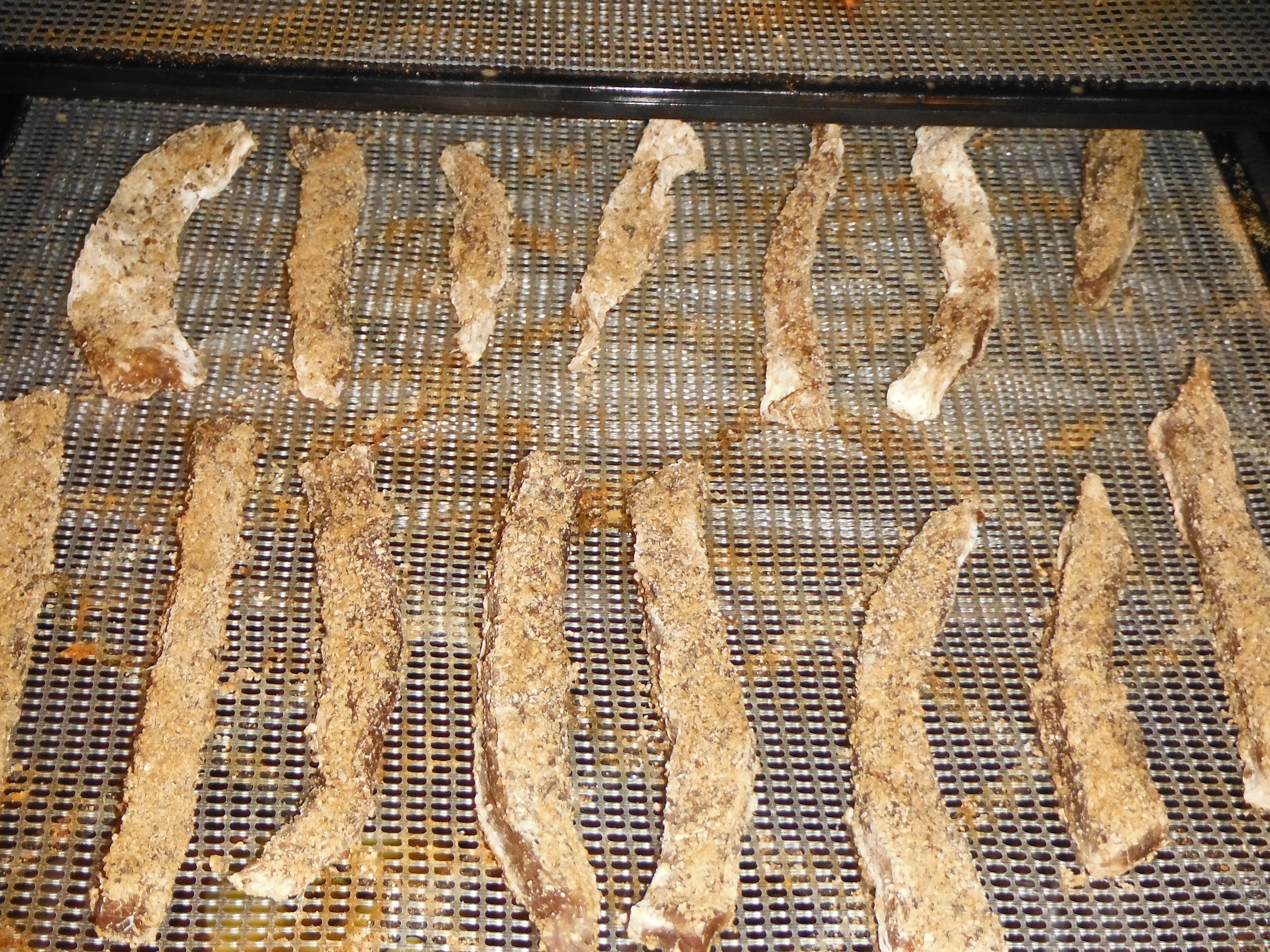

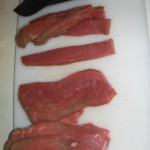

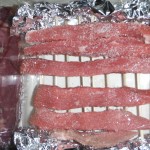
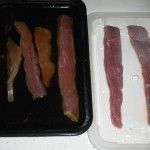

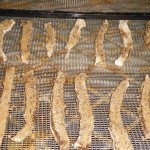
Love the details…thanks for posting this inforamtion.
No problem…the blog is a form of therapy for me, allows me to live my hillbilly ways in this strange, flat land of sun, sand, and NEw York accents….
Very dry biltong can be pulverized in a food processor and makes a great topping for sandwiches with just a bit of butter.
DAmn. THAT sounds TASTY!